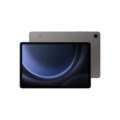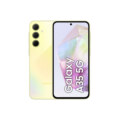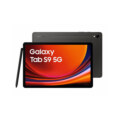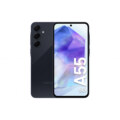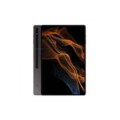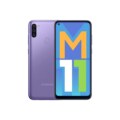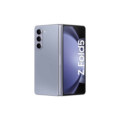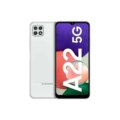Samsung Galaxy Z Fold 3




Specs
General
| Device Type | Smart Phone |
| Model | SM-F926B, SM-F926B/DS, SM-F926U, SM-F926U1, SM-F926W, SM-F9260, SM-F926N |
| Announced | 11 August, 2021 |
| Released | 27 August, 2021 |
| Status | Available |
Design
| Water Resistant | IPX8 water resistant (up to 1.5m for 30 mins) |
| Dimensions | unfolded: (158.2 x 128.1 x 6.4 mm) Folded: (67.1 x 158.2 x 16.0mm) |
| Weight | 271 g |
| Protection |
Glass front (Gorilla Glass Victus) (folded) glass back (Gorilla Glass Victus) plastic front (unfolded) aluminum frame |
| Colors |
Phantom Black Phantom Silver Phantom Green Thom Browne Edition Wooyoungmi Edition |
Display
| Refresh Rate | 120 Hz |
| Display Type Display Technology => A number of display technologies and types used in mobile phones => TFT (Thin Film Transistor), IPS (In-Place Switching), OLED (Organic Light Emitting Diode), AMOLED (Active-Matrix Organic Light-Emitting Diode), Super AMOLED (an even advanced version of AMOLED), Resistive Touchscreen (Resistive touchscreens contain two layer of conductive material with a very small gap between them which acts as a resistance), Capacitive Touchsceen (Capacitive touchscreen technology consists of a layer of glass coated with a transparent conductor) | Dynamic AMOLED |
| Size | 7.6 inches (19.3 cm) |
| Resolution | 1768x2208 px |
| Display Colors Display Colors is refers to the number of different shades of colors that the screen is capable of displaying => 64K colors, 256K colors and 16 million colors, Obviously 16M is highest available range of colors and better than others. | 16M colors |
| Pixel Density Pixel Density (PPI) is refers to the concentration of pixels on a particular display, measured in pixels per inch (ppi). Pixel density is calculated by dividing the diagonal pixel resolution of a display by its diagonal size, higher pixel density better display quality. | ~ 374 ppi |
| Touch Screen | Yes, Capacitive Touchscreen, Multi-touch |
| Display Protection Display Protection => Gorilla Glass is a special alkali-aluminosilicate glass shield with exceptional damage resistance that helps protect mobile displays from scratches, drops, and bumps of everyday use, It is always better to go for a smartphone with Gorilla Glass for that added protection and peace of mind. | Corning Gorilla Glass Victus |
| Features |
HDR10+, 1200 nits (peak) Always-on display Cover display: Dynamic AMOLED 2X, 6.2 inches, 832 x 2268 pixels, 120Hz, 25:9 ratio, 120Hz, Corning Gorilla Glass Victus |
Camera
| Front Camera | 4 MP, f/1.8, 2.0µm, under display |
| Camera Setup | Triple |
| Main Camera Camera is able to capture photographs and usually videos, The most important characteristics of a camera are the resolution (measured in megapixels), lens focus type (fixed or automatic), higher megapixel cameras are known to capture higher quality photos, but not always a good measurement of the photos quality. |
12 MP, f/1.8, 26mm (wide), 1/1.76", 1.8µm, dual pixel PDAF, OIS 12 MP, f/2.4, 52mm (telephoto), 1/3.6", 1.0µm, PDAF, OIS, 2x optical zoom 12 MP, f/2.2, 123˚, 12mm (ultrawide), 1.12µm |
| Image | 4000 x 3000 Pixels |
| Video | 4K@60fps, 1080p@60/240fps (gyro-EIS), 720p@960fps (gyro-EIS), HDR10+ |
| Camera Features | Geo-tagging, touch focus, HDR, panorama, |
| Flash Flash Light => There is commonly two types of flash lights are used in camera mobile phones, LED Flash (LED flash offers lower power consumption with drive circuitry that takes up very little room, LEDs can be strobed faster than any other light source), Xenon Flash (xenon flash produces an extremely intense full-spectrum white light for a very short duration) | LED flash |
Hardware
| Operating System OS => Every computer system run on a base software called Operating System (OS). Operating System controls all basic operations of the computer (such as smartphone, PDAs, tablet computers and other handheld devices). The Operating System allows the user to install and run third party applications (apps), apps are used to add new functionality to the device. | Android 11 |
| Chipset Chipset is a group of integrated circuits designed to perform one or a more dedicated functions, often with real time computing constraints, Popular smartphones are equipped with more advanced embedded chipsets that can do many different tasks depending on their programming. | Qualcomm Snapdragon 888 |
| CPU CPU (Central Processing Unit) mostly known as processors, CPU processes instructions in order to carry out certain functions that make your device operate properly. Processors are often described as the brain of computers, smartphones and tablets, Smartphones and tablets rely on processors to carry out their every task, Processors are an incredibly important factor in selecting any type of computing device, including your smartphone. | Octa core (2.84 GHz, Single core, Kryo 680 + 2.42 GHz, Tri core, Kryo 680 + 1.8 GHz, Quad core, Kryo 680) |
| Architecture | 64 bit |
| Fabrication | 4 nm |
| GPU GPU (Graphics Processing Unit) is a single-chip processor designed to rapidly manipulate and alter memory to accelerate the creation of images in a frame buffer intended for output to a display, This includes things such as lighting effects, object transformations, and 3D motion. | Adreno 660 |
| RAM (Memory) RAM (Random Access Memory) is a type of computer memory that can be accessed randomly, any byte of memory can be accessed without touching the preceding bytes that allows information to be stored and accessed quickly from random locations. RAM is the most common type of memory found in computer systems, smartphones, tablets and other electronic devices. | 8 GB |
| Internal Storage Internal Storage is a data storage space (flash memory) mostly used in smartphones, tablets and other electronic devices where operating system, apps, music, photos, videos, files and other user data Is stored. | 256 GB |
| Card Slot Memory Card Slot is a special slot for inserting a memory card. Memory cards allow you to expand the phone's built-in memory, A memory card (sometimes called a flash memory card or a storage card) is a small storage medium used to store data such as text, pictures, audio, and video, for use on small, portable or remote computing devices such as mobile phones, mp3 players, digital cameras. | |
| Sensors Sensors are electronic components that detects and responds to some type of input from the physical environment. The specific input could be light, heat, motion, moisture, pressure and location, The output is generally a signal that is converted to use in computing systems, a location sensor, such as a GPS receiver is able to detect current location of your electronic device. | Accelerometer, Barometer, Compass, Fingerprint (side mounted), Gyro, Proximity |
Network
| SIM TYPE SIM (Subscriber Identity Module) is a small card that contains mobile network subscriber's account information. This allows the phone using the card to attach to a mobile network. The SIM card is most commonly associated with GSM and UMTS mobile networks. Moving a SIM card from one phone to another allows a subscriber to switch mobile phones without having to contact their mobile network carrier. SIM cards can also be used by a phone to store limited amounts of data, such as phone numbers and text messages. | Nano SIM |
| SIM Technology | Dual Sim, Dual Standby |
| 2G Network | GSM 850 / 900 / 1800 / 1900 |
| 3G Network | HSDPA 850 / 900 / 1700(AWS) / 1900 / 2100 |
| 4G Network | LTE |
| 5G Network | SA/NSA/Sub6 |
Multimedia
| FM Radio | |
| Stereo Speakers | YES |
| Loudspeaker | YES |
| Audio Jack | NO |
| Audio Features |
32-bit/384kHz audio Tuned by AKG |
Connectivity
| Wi-fi Wi-Fi is a popular wireless networking technology using radio waves to provide high-speed network connections that allows devices to communicate without cords or cables, Wi-Fi is increasingly becoming the preferred mode of internet connectivity all over the world. | Wi-Fi 802.11 a/b/g/n/ac/6e, dual-band |
| Bluetooth Bluetooth is a wireless communications technology for exchanging data between mobile phones, headsets, computers and other network devices over short distances without wires, Bluetooth technology was primarily designed to support simple wireless networking of personal consumer devices. | v5.2 with A2DP, LE, apt-X HD |
| GPS GPS The Global Positioning System is a satellite-based radio navigation system, GPS permits users to determine their position, velocity and the time 24 hours a day, in all weather, anywhere in the world, In order to locate your position, your device or GPS receiver must have a clear view of the sky. | Yes + A-GPS support & Glonass, BDS, GALILEO |
| USB | USB Type-C 3.2 |
| EDGE EDGE (Enhanced Data GSM Environment) is a wireless network technology generally considered the next step in the 2G network offers data transfer rates up to four times faster than ordinary GSM networks, Generally, EDGE is used for the purpose of wireless data transfer, such as sharing pictures and videos or browsing the Internet via a mobile phone connection. | |
| GPRS GPRS (General Packet Radio Service) is a packet oriented mobile data service on the 2G and 3G cellular communication system's global system for mobile communications (GSM), Generally, GPRS is used for the purpose of wireless data transfer, such as sharing pictures and videos or browsing the Internet via a mobile phone connection. | |
| Speed | 3G (HSPA 42.2/5.76 Mbps, 4G (LTE-A (7CA) Cat20 2000/200 Mbps), 5G capable |
| Wi-fi Hotspot | |
| NFC NFC (Near field communication) is a set of standards for smartphones and similar devices to establish peer-to-peer radio communications with each other by touching them together or bringing them into proximity, usually no more than a few inches. |
Features
| Messaging | SMS(threaded view), MMS, Email, Push Mail, IM |
| Web Browser Web Browser => a web browser is a software application used to locate, retrieve and display content on the World Wide Web, including Web pages, images, video and other files, The primary function of a web browser is to render HTML, the code used to design or markup webpages. | HTML5 |
| Games | Built-in + Downloadable |
| Torch |
Battery
| Battery Type Battery Type => Cell phones run on various kinds of batteries depending on the manufacturer, phone size or shape and features. There are basically four types of cell phone batteries => Lithium Polymer, Lithium Ion, Nickel Metal Hydride and Nickel Cadmium. | Li-Ion (Lithium Ion) |
| Capacity Battery Capacity is a measure (typically in Amp-hr) of the charge stored by the battery, and is determined by the mass of active material contained in the battery. The battery capacity represents the maximum amount of energy that can be extracted from the battery under certain conditions. | 4400 mAh |
| Placement | Non-removable |
| Wireless Charging Wireless Charging (Inductive Charging) uses an electromagnetic field to transfer energy between two objects. This is usually done with a charging station. Energy is sent through an inductive coupling to an electrical device, which can then use that energy to charge batteries or run the device. | Yes |
| Extra |
25W wired 11W wireless 4.5W reverse wireless |
Samsung Galaxy Z Fold 3 Detailed Review
Introduction: Launched in August 2021, the Samsung Galaxy Z Fold 3 is the third generation of Samsung’s foldable smartphone series, representing a significant leap in design, durability, and functionality. It is packed with top-tier features, including a large foldable display, S Pen support, water resistance, and more. This review dives into its design, display, performance, camera system, battery life, software, and a summary of its pros and cons.
Specifications at a Glance:
- Display:
- Main: 7.6-inch QXGA+ Dynamic AMOLED 2X (2208 x 1768, 374 ppi, 120Hz)
- Cover: 6.2-inch HD+ Dynamic AMOLED 2X (2268 x 832, 387 ppi, 120Hz)
- Processor: Qualcomm Snapdragon 888 (5nm)
- RAM: 12GB
- Storage Options: 256GB, 512GB (UFS 3.1)
- Rear Cameras:
- 12 MP Wide (f/1.8, OIS)
- 12 MP Ultra-Wide (f/2.2)
- 12 MP Telephoto (f/2.4, OIS, 2x optical zoom)
- Front Cameras:
- Under Display: 4 MP (f/1.8)
- Cover Display: 10 MP (f/2.2)
- Battery: 4400 mAh with 25W fast charging, 11W wireless charging, and reverse wireless charging
- Water Resistance: IPX8 rating (up to 1.5 meters for 30 minutes)
- Operating System: Android 11 (One UI 3.1.1), upgradable
- Dimensions:
- Folded: 158.2 x 67.1 x 14.4-16 mm
- Unfolded: 158.2 x 128.1 x 6.4 mm
- Weight: 271 grams
Design and Build Quality
Aesthetics:
- Refined Foldable Design: The Galaxy Z Fold 3 maintains the foldable form factor but with noticeable refinements in design. The hinge feels sturdier and more seamless than its predecessor.
- Premium Materials: It features an Armor Aluminum frame with Gorilla Glass Victus on the outer display, providing durability without compromising on aesthetics.
- Sleek Finish: Available in Phantom Black, Phantom Silver, and Phantom Green, the phone offers a sophisticated and modern look.
Durability:
- Improved Water Resistance: The IPX8 rating makes it the first foldable smartphone that can withstand submersion in water, offering better protection against accidental spills.
- Stronger Foldable Screen: The inner display is made of a stronger Ultra-Thin Glass (UTG), making it more durable than previous models.
Ergonomics:
- Compact and Functional: While thick when folded, the device feels comfortable to hold, with the outer display functioning as a regular smartphone screen for quick tasks.
- Hinge Mechanism: The hinge mechanism feels solid, with a smooth folding action that instills confidence in its longevity.
- S Pen Support: The Z Fold 3 now supports the S Pen, making it a productivity powerhouse, though the S Pen is sold separately.
Summary: The Galaxy Z Fold 3’s design is a perfect blend of cutting-edge foldable technology with a durable and premium feel, offering unmatched versatility in its form factor.
Display
Specifications:
- Main Display: 7.6-inch QXGA+ Dynamic AMOLED 2X, 2208 x 1768 resolution, 374 ppi, 120Hz adaptive refresh rate.
- Cover Display: 6.2-inch HD+ Dynamic AMOLED 2X, 2268 x 832 resolution, 387 ppi, 120Hz adaptive refresh rate.
Performance:
- Immersive Main Display: The large 7.6-inch foldable display is excellent for multitasking, media consumption, and gaming. The high 120Hz refresh rate ensures smooth scrolling and responsiveness, making it feel as fluid as a high-end tablet.
- Cover Display for Quick Tasks: The 6.2-inch cover display, while narrower, is perfect for quick tasks like texting, making calls, or browsing, and it also supports the 120Hz refresh rate.
- Vivid Colors and Deep Blacks: Both displays feature Dynamic AMOLED 2X panels, providing vivid colors, deep blacks, and sharp contrast for an immersive visual experience.
- Under-Display Camera: The under-display 4 MP camera is a technological marvel but still lacks in photo quality. However, it offers an uninterrupted viewing experience for the large inner screen.
Summary: The Samsung Galaxy Z Fold 3’s dual-display setup offers a stunning, immersive visual experience with smooth performance, making it perfect for productivity, gaming, and multimedia use.
Performance
Hardware:
- Processor: Qualcomm Snapdragon 888, 5nm
- RAM: 12GB
- Storage: 256GB/512GB UFS 3.1 (no microSD support)
Performance Evaluation:
- Top-Tier Performance: Powered by the Snapdragon 888, the Z Fold 3 delivers blazing fast performance, capable of handling demanding apps, gaming, and multitasking with ease.
- Multitasking Powerhouse: The foldable screen and large RAM make it a productivity powerhouse. You can open up to three apps simultaneously on the main display, and the experience remains smooth.
- Gaming: The Adreno 660 GPU ensures smooth and lag-free gameplay, even for graphics-intensive games like Call of Duty Mobile or PUBG Mobile.
Benchmark Scores:
- Geekbench 5: Single-core: ~1125 | Multi-core: ~3500
- AnTuTu: ~720,000
Summary: The Galaxy Z Fold 3 offers cutting-edge performance, capable of handling everything from high-end gaming to heavy multitasking, making it one of the most powerful smartphones available.
Camera
Rear Cameras:
- 12 MP Wide (f/1.8, OIS)
- 12 MP Ultra-Wide (f/2.2)
- 12 MP Telephoto (f/2.4, OIS, 2x optical zoom)
Front Cameras:
- Under Display (4 MP, f/1.8)
- Cover Display (10 MP, f/2.2)
Camera Performance:
- Daylight Photography: The camera system performs well in daylight, with sharp, detailed photos. The colors are vivid, and the dynamic range is impressive.
- Low-Light Photography: Low-light performance is solid, but not the best in its class. Night mode helps improve clarity and brightness.
- Ultra-Wide Lens: The ultra-wide camera offers versatility, capturing wide-angle shots with minimal distortion.
- Telephoto Lens: With 2x optical zoom and OIS, it handles zoomed-in shots well, though it lacks the higher zoom capabilities seen in other flagships.
- Video Recording: The Z Fold 3 records up to 4K at 60fps, with solid stabilization and good dynamic range. The foldable screen allows for creative shooting angles.
Summary: The camera setup on the Galaxy Z Fold 3 is versatile and capable but doesn’t quite match the very best in mobile photography. The under-display camera is more for novelty than performance.
Battery Life
Specifications:
- Capacity: 4400 mAh
- Charging: 25W wired, 11W wireless, reverse wireless charging
Performance:
- Full-Day Battery Life: With moderate use, the 4400 mAh battery comfortably lasts through a full day, but heavy users might need a top-up in the evening.
- Fast Charging: The 25W fast charging isn’t the fastest in its class, but it can charge the phone to 50% in about 30 minutes.
- Power Management: The Snapdragon 888 and the 120Hz display do consume more power, especially when multitasking or using both screens frequently.
- Wireless Charging: Wireless charging is a nice convenience feature, but it’s slower compared to wired charging.
Summary: The battery life is decent, but not exceptional, considering the power-hungry features. Heavy users might need to charge more than once a day.
Software
- Operating System: Android 11 (One UI 3.1.1)
- Upgradability: Regular updates with Android 12 and beyond
Software Features:
- One UI Enhancements: Samsung’s One UI is optimized for foldables, with features like Multi-Active Window and App Continuity that enhance multitasking on the large screen.
- S Pen Support: The Z Fold 3 supports the S Pen, adding another layer of productivity, though the pen isn’t built into the phone itself.
- Customization Options: Samsung offers plenty of customization features, allowing users to tailor the experience to their needs.
Summary: The software on the Galaxy Z Fold 3 is optimized for multitasking and productivity, with features that make the most of its foldable form factor.
Pros & Cons
Pros:
- Immersive 7.6-inch foldable display with 120Hz refresh rate
- Improved durability with water resistance (IPX8) and stronger foldable glass
- S Pen support for added productivity
- Excellent multitasking and performance with Snapdragon 888 and 12GB RAM
- Versatile camera system with good overall photo quality
- Enhanced software features for foldables (One UI 3.1.1)
Cons:
- Expensive price point
- Battery life could be better for power users
- Under-display camera lacks photo quality
- No included S Pen or charging brick
- Still somewhat thick when folded
Conclusion
The Samsung Galaxy Z Fold 3 represents a significant improvement in the foldable smartphone market. It is durable, versatile, and powerful, making it ideal for users who prioritize multitasking, productivity, and innovation. However, its high price and certain compromises, like average battery life and the under-display camera’s limitations, might deter some users. Nonetheless, it’s one of the best foldable devices available, pushing the boundaries of what a smartphone
Review
Disclaimer Note
All prices in Pakistan is updated daily from the price list provided by local shops and dealers but we can not guarantee that the information / price on this page is 100% correct (Human error is possible), always visit your local shop for exact cell phone cost & rate.
